Why do you get boils on your body. Boils on Body: Causes, Symptoms, and Effective Treatments
What are boils and how do they form on the skin. What causes boils to develop and who is at higher risk. How can boils be treated effectively at home or by a doctor. When should you seek medical attention for a boil.
Understanding Boils: What They Are and How They Form
Boils, also known as skin abscesses, are common and often painful infections that develop in hair follicles and surrounding skin. They typically begin as small, red lumps that gradually fill with pus as the body’s immune system fights the infection. While initially pea-sized, boils can grow to be as large as a golf ball in some cases.
Common symptoms of boils include:
- Swelling and redness around the affected area
- Pain and tenderness
- A white or yellow center as pus accumulates
- Oozing or crusting as the boil drains
In some cases, individuals may experience systemic symptoms such as fatigue or fever, which warrant medical attention.
Common Locations for Boils on the Body
Boils can appear anywhere on the body, but certain areas are more prone to developing these infections. Where are boils most likely to form? The most common locations include:
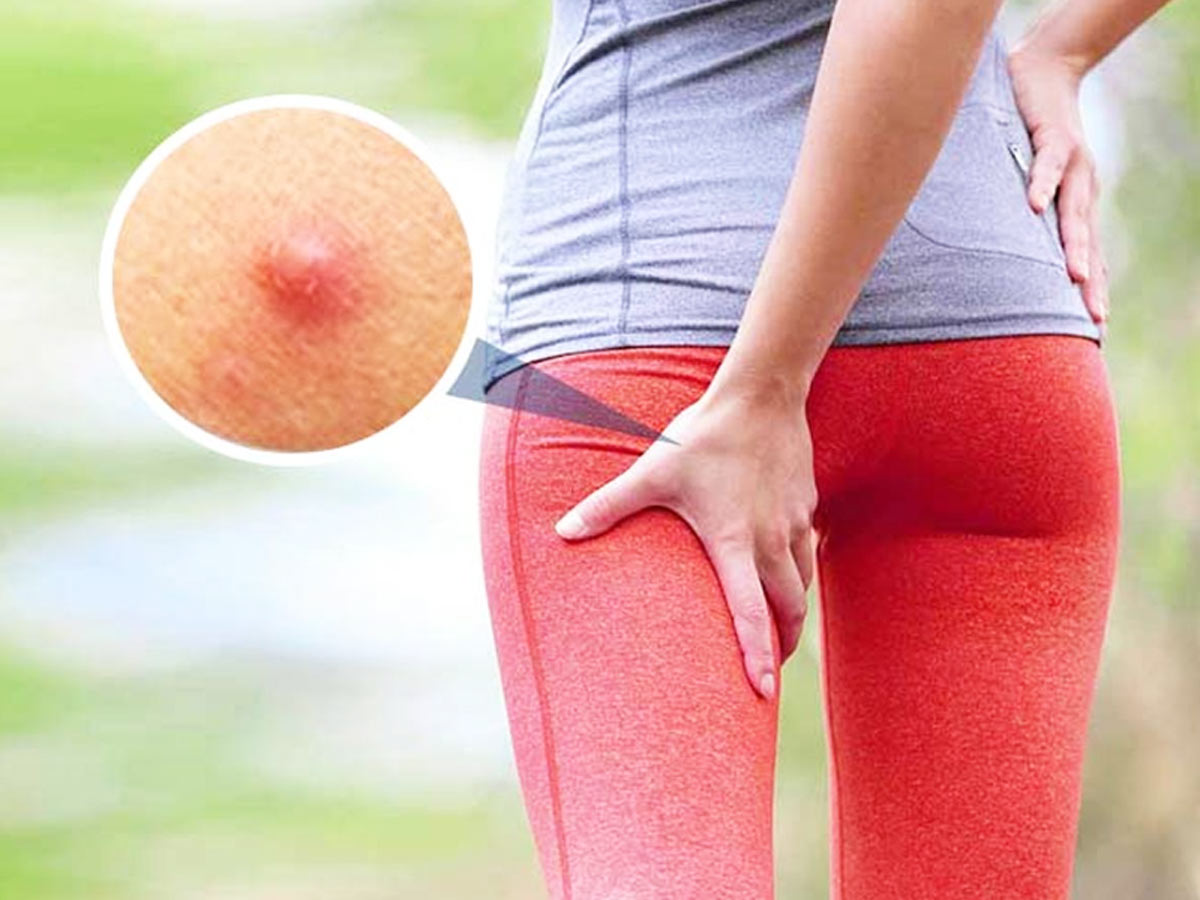
- Face and neck
- Armpits
- Shoulders and back
- Buttocks
- Inner thighs
These areas are particularly susceptible due to factors such as hair density, sweat production, and friction. Boils may also develop around the ears or near the nose, areas rich in hair follicles and sebaceous glands.
The Primary Culprit: Staphylococcus Aureus
What causes most boils to develop? The majority of boils are caused by Staphylococcus aureus bacteria, commonly known as staph. Many healthy individuals carry these bacteria on their skin or in their nasal passages without issue. However, when the bacteria enter the body through a break in the skin, such as a cut, scrape, or even a tiny hair follicle, an infection can occur.
In some cases, boils may also result from clogged pores that become infected, particularly in association with acne. Understanding the root cause of boils is crucial for effective prevention and treatment.
MRSA: A Concerning Variant
While most staph infections are treatable with common antibiotics, there’s a growing concern about methicillin-resistant Staphylococcus aureus (MRSA). How does MRSA differ from regular staph infections? MRSA boils can appear identical to those caused by ordinary staph but are resistant to many antibiotics, making them more challenging to treat. If a skin infection doesn’t improve after 2-3 days of antibiotic treatment, MRSA may be suspected, necessitating prompt and appropriate medical intervention.

Risk Factors: Who’s More Likely to Develop Boils?
While anyone can develop a boil, certain factors increase the risk. What makes some people more susceptible to boils? Key risk factors include:
- Close contact with infected individuals
- Skin conditions like acne or eczema that compromise skin integrity
- Diabetes, which can affect the body’s ability to fight infections
- A weakened immune system due to illness or medications
Understanding these risk factors can help individuals take appropriate precautions and seek timely treatment when necessary.
Types of Boils and Related Skin Infections
Boils can manifest in various forms, each with distinct characteristics. Understanding these variations is crucial for proper identification and treatment.
Folliculitis: The Precursor to Boils
Folliculitis is an inflammation or infection of hair follicles that can potentially develop into a boil. It appears as tiny pimples with whiteheads around individual hairs, often accompanied by redness. While typically less severe than a full-blown boil, folliculitis can be itchy, tender, and uncomfortable.
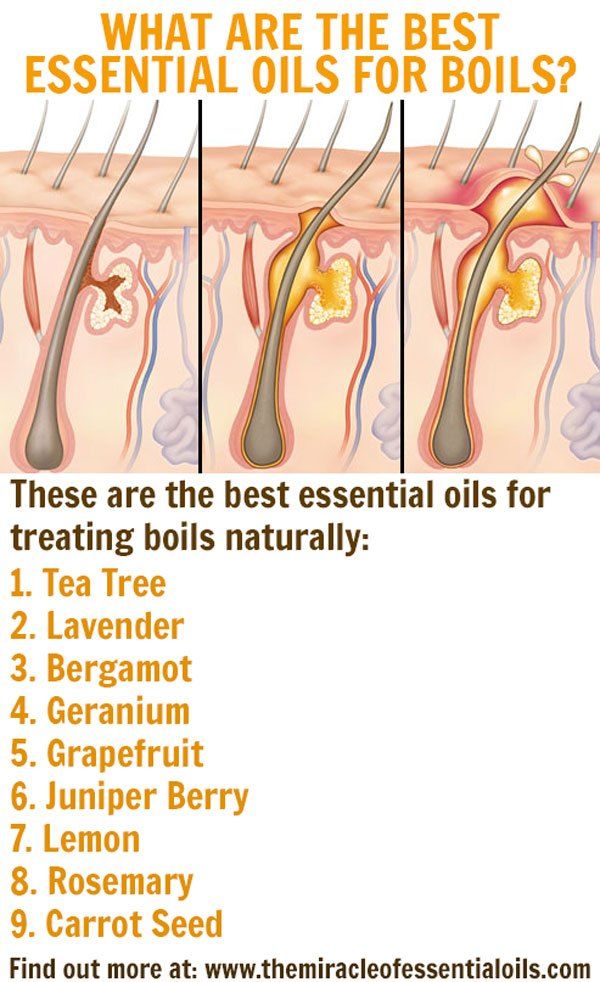
Carbuncles: When Boils Cluster
What happens when multiple boils join together? The result is a carbuncle, a deeper and often more severe infection. Carbuncles are most commonly found on the back and neck but can occur anywhere on the body. They tend to be more common in men and may take longer to heal compared to individual boils.
Cystic Acne: Deep Skin Abscesses
Cystic acne is a form of skin abscess that develops when oil and dead skin cells clog hair follicles, creating an environment where bacteria thrive. It affects deeper skin tissue than regular acne, resulting in firm, painful cysts. This condition is most common on the face and shoulders, typically occurring during the teenage years.
Hidradenitis Suppurativa: A Chronic Condition
When lumps and pus-filled abscesses repeatedly develop in certain body areas, it may indicate hidradenitis suppurativa. This chronic condition starts in sweat glands and hair follicles that become blocked. While mild cases can be managed with home care, more severe and recurring instances may require medical intervention.
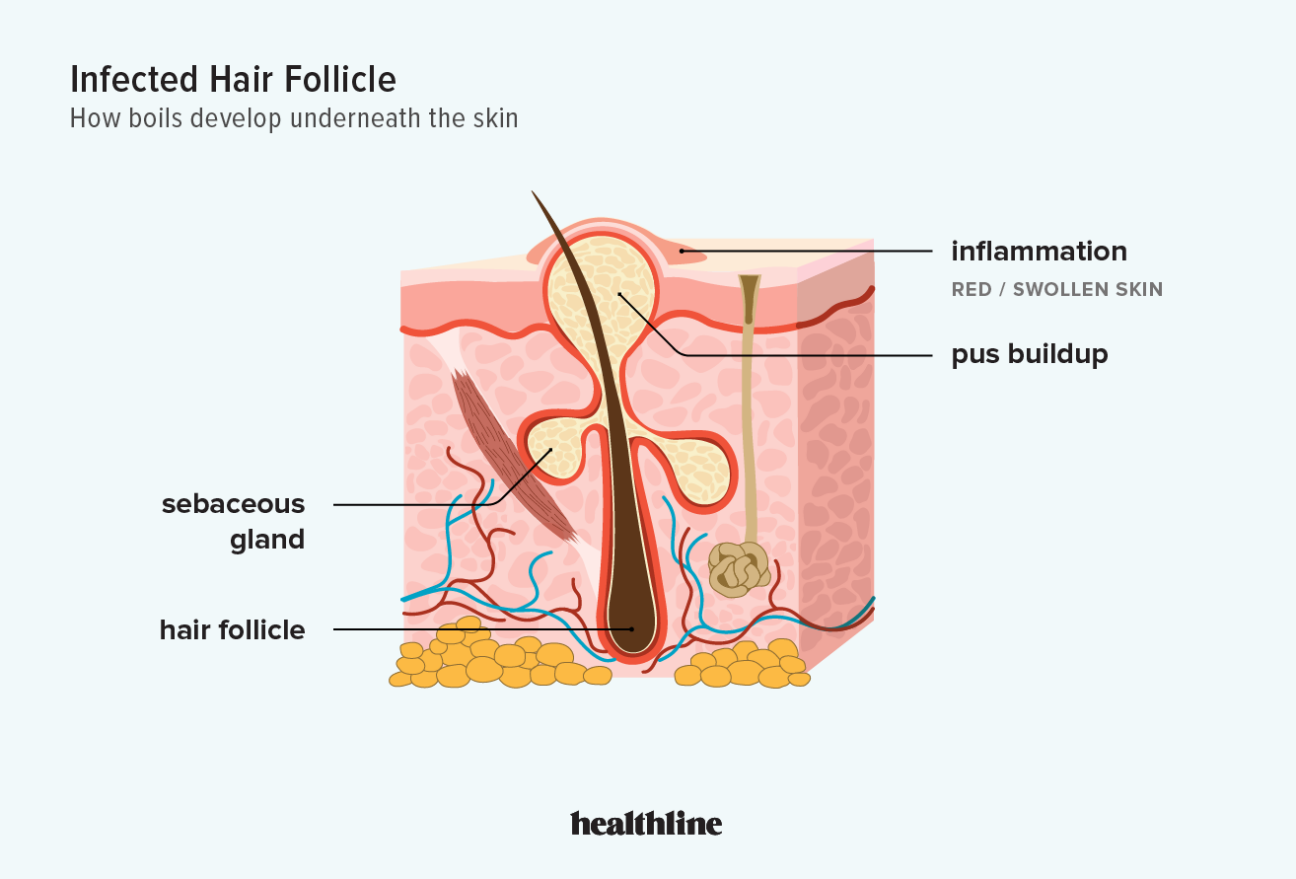
Pilonidal Abscess: A Unique Location
A pilonidal abscess forms in the skin just above the buttocks crease. These abscesses are believed to be influenced by hair growth, irritation, pressure, and prolonged sitting. Some individuals are born with a “pilonidal dimple,” which can be prone to infections. Any signs of infection in this area warrant medical attention.
Styes: Boils of the Eyelid
A stye is essentially a boil that develops on the eyelid, typically caused by staph bacteria. It begins in an eyelash follicle and can be red, warm, swollen, and uncomfortable. Styes are sometimes confused with chalazia, which are also eyelid lumps but are usually painless and caused by blocked oil glands rather than infections.
Prevention and Hygiene: Reducing the Risk of Boils
While it’s not always possible to prevent boils entirely, certain practices can significantly reduce the risk of developing these painful infections. How can you minimize your chances of getting a boil?
- Maintain good personal hygiene, including regular handwashing
- Keep cuts, scrapes, and other skin injuries clean and covered
- Avoid sharing personal items like towels, razors, or clothing
- Wash bedding and clothing regularly, especially if you’re prone to boils
- Manage underlying health conditions, such as diabetes, that may increase your risk
It’s important to note that while boils themselves are not exactly contagious, the bacteria that cause them (staph) can easily spread through skin-to-skin contact or contaminated objects. To prevent spreading staph bacteria:

- Avoid touching or squeezing boils
- Keep boils covered with clean, dry bandages
- Wash hands thoroughly after caring for a boil
- Don’t share personal items while you have an active boil
Treatment Options: From Home Care to Medical Intervention
The approach to treating boils can vary depending on their severity and location. What are the most effective ways to treat a boil?
Home Care for Boils
For many boils, home treatment can be effective. Here are some steps you can take:
- Apply warm, moist compresses to the affected area several times a day. This helps bring the boil to a head and encourage drainage.
- Once the boil starts draining, keep the area clean and continue applying warm compresses (use a clean one each time).
- Cover the area with a sterile bandage to prevent spread of infection.
- Wash hands thoroughly before and after treating the boil.
It’s crucial to avoid squeezing or attempting to pop the boil, as this can spread the infection and potentially lead to more serious complications.

When to Seek Medical Attention
While many boils can be treated at home, certain situations require professional medical care. When should you see a doctor for a boil?
- The boil is on your face, spine, or near your anus
- The boil is large, extremely painful, or hasn’t improved with home treatment after a week
- You have a fever or other systemic symptoms
- You have multiple boils (carbuncle)
- You have a weakened immune system or other health conditions that increase your risk of complications
Medical Treatments for Boils
When professional medical care is needed, treatments may include:
- Incision and drainage: For larger boils, a doctor may need to make a small incision to drain the pus.
- Antibiotics: If the infection is severe or has spread, oral or topical antibiotics may be prescribed.
- Culture and sensitivity testing: In some cases, the pus may be cultured to identify the specific bacteria causing the infection and determine the most effective antibiotic.
For recurring boils or chronic conditions like hidradenitis suppurativa, long-term treatment plans may be necessary, potentially involving medications, lifestyle changes, or in some cases, surgical interventions.

Complications and Long-Term Management of Boils
While most boils heal without significant complications, understanding potential risks and long-term management strategies is important, especially for those prone to recurrent boils.
Potential Complications
What complications can arise from untreated or severe boils?
- Spread of infection to deeper tissues or bloodstream (bacteremia)
- Formation of new boils nearby or in other areas of the body
- Scarring, especially if boils are large or improperly treated
- Rarely, more serious conditions like sepsis or endocarditis
Managing Recurrent Boils
For individuals who experience frequent boils, additional steps may be necessary:
- Identifying and addressing underlying causes (e.g., chronic skin conditions, immune system issues)
- Using antibacterial soaps or body washes
- Discussing potential use of long-term, low-dose antibiotics with a healthcare provider
- Considering lifestyle changes to reduce risk factors
Impact on Quality of Life
Chronic or recurrent boils can significantly impact an individual’s quality of life. How do frequent boils affect daily living?
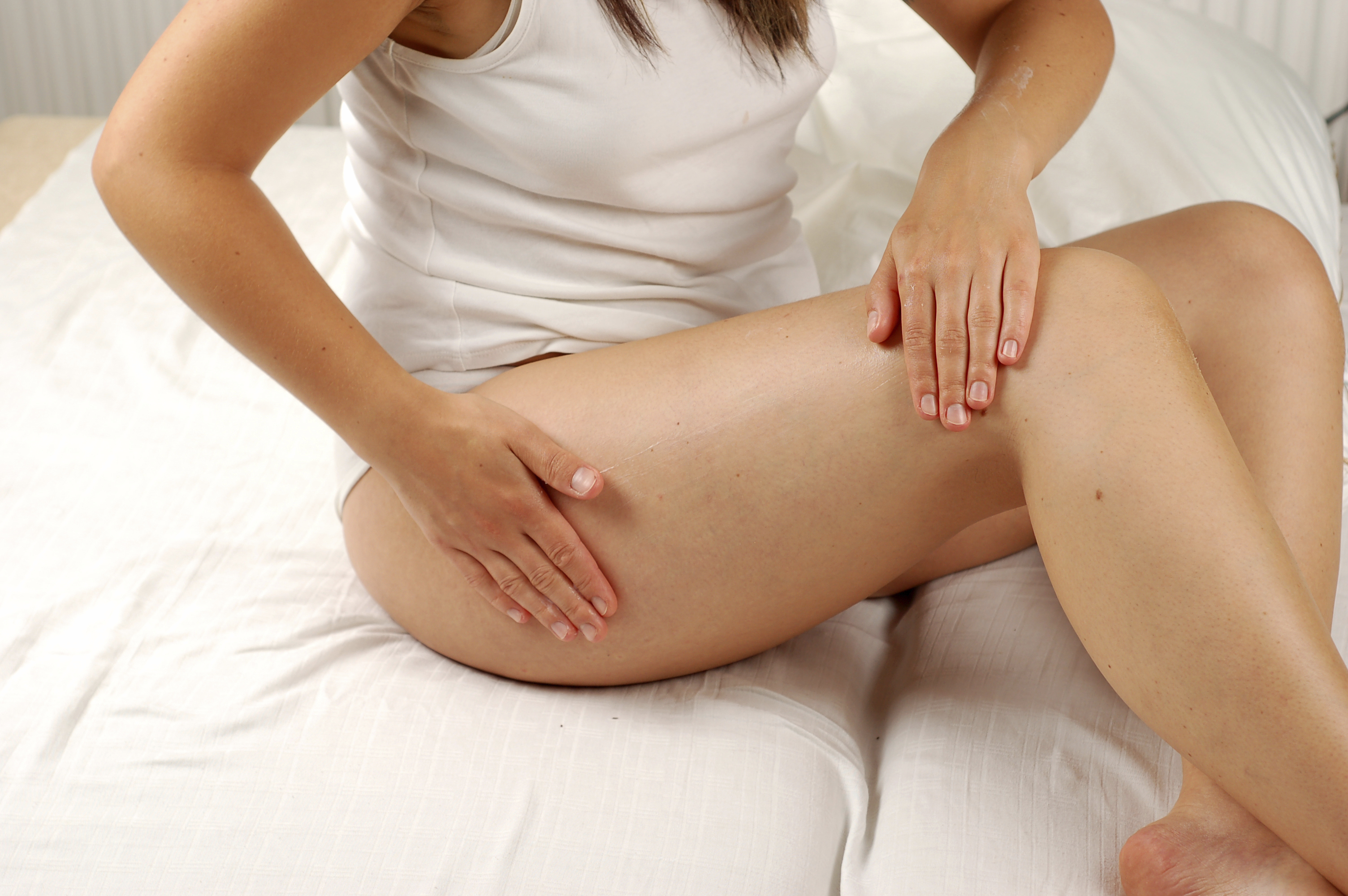
- Physical discomfort and pain
- Emotional stress and self-consciousness
- Interference with work or social activities
- Potential financial burden due to medical treatments
Addressing these impacts often requires a holistic approach, potentially involving not just medical treatment but also psychological support and lifestyle adaptations.
Emerging Research and Future Treatments for Boils
As medical science advances, new approaches to preventing and treating boils are being explored. What does the future hold for boil treatment and prevention?
Antibiotic Alternatives
With growing concerns about antibiotic resistance, researchers are investigating alternative treatments for bacterial skin infections. These include:
- Bacteriophage therapy: Using viruses that specifically target harmful bacteria
- Antimicrobial peptides: Naturally occurring molecules that can kill bacteria
- Novel topical treatments that disrupt bacterial biofilms
Genetic Research
Studies into genetic factors that may predispose individuals to recurrent boils or conditions like hidradenitis suppurativa are ongoing. This research could lead to more personalized prevention and treatment strategies in the future.

Microbiome Manipulation
Understanding the role of the skin microbiome in preventing or promoting bacterial infections is an area of active research. Future treatments might involve promoting beneficial bacteria on the skin to prevent pathogenic bacteria from causing infections.
As research progresses, individuals prone to boils may have access to more effective, targeted treatments that address the root causes of these infections, potentially reducing their frequency and severity.
Pictures on Skin, Causes, and Treatment
Medically Reviewed by Dany Paul Baby, MD on June 26, 2022
A boil is a common, painful infection of a hair follicle and the surrounding skin. It begins as a red lump, then fills with pus as white blood cells rush in to fight the infection. Good home care can often clear up a single boil, also known as a skin abscess. A doctor’s care is needed when a boil resists treatment or develops in certain vulnerable areas of the body.
Boils are usually pea-sized, but can grow as large as a golf ball. Symptoms can include:
- Swelling, redness, and pain
- A white or yellow center or tip
- Weeping, oozing, or crusting
You may also have a general feeling of ill health, fatigue, or a fever, which is reason to call a doctor.
Boils can form anywhere on the body, but they’re most common on the face, neck, armpits, shoulders, back, and buttocks. Hairy, sweaty areas are typical sites, as well as areas of friction, such as the inner thighs. Boils can also develop around the ear or near the nose. The pain often worsens as pus collects under the skin, then eases as fluids begin to drain.
Boils can also develop around the ear or near the nose. The pain often worsens as pus collects under the skin, then eases as fluids begin to drain.
Most boils are caused by staph bacteria (Staphylococcus aureus), which many healthy people carry on their skin or in their noses without a problem. When a scrape, cut, or splinter breaks the skin, the bacteria can enter a hair follicle and start an infection. Others boils, such as those associated with acne, develop from clogged pores that become infected.
MRSA can look exactly like an ordinary boil: red, swollen, pus-filled, and tender. But MRSA infections are caused by one particular type of staph that is resistant to many antibiotics. If a skin infection spreads or doesn’t improve after 2-3 days of antibiotics, your doctor may suspect MRSA. The right treatment given promptly is important to heal a MRSA infection and prevent a deeper, more dangerous infection.
Not exactly, but the germs that cause boils (staph) are easily spread through skin-to-skin contact and contaminated objects. These bacteria usually do no harm unless they find a break in the skin. To avoid spreading staph, don’t share towels, bedding, clothes, or sports gear while you have a boil. Avoid touching the boil, and keep it covered. Frequent hand washing can also help prevent spreading the bacteria.
These bacteria usually do no harm unless they find a break in the skin. To avoid spreading staph, don’t share towels, bedding, clothes, or sports gear while you have a boil. Avoid touching the boil, and keep it covered. Frequent hand washing can also help prevent spreading the bacteria.
Folliculitis is an inflammation or infection of the hair follicles that can develop into a boil. Tiny pimples with whiteheads appear around individual hairs, sometimes surrounded by red skin. It can be itchy, tender, and uncomfortable, but is typically not as painful or deep as a boil. Shaving or friction from tight clothing can let staph bacteria slip under the skin — the most common cause of both folliculitis and boils.
When several boils form close together and join beneath the skin, it’s called a carbuncle. They are most commonly found on the back and the neck but can develop anywhere. Men are more likely to develop carbuncles than women. A carbuncle tends to lie deeper beneath the skin than a boil and can take longer to heal.
Cystic acne is a type of skin abscess that forms when oil and dead skin cells clog a hair follicle, creating a place where bacteria grow and thrive. It affects deeper skin tissue than regular acne, leading to firm, painful cysts. It’s most commonly on the face and shoulders and typically occurs in the teenage years.
When lumps and pus-filled abscesses repeatedly develop in these areas of the body, it may be a chronic condition called hidradenitis suppurativa. Infection starts in sweat glands and hair follicles that become blocked. Mild cases heal with home care. Several drugs and treatments are available for more serious and recurring cases.
When a boil forms in the skin just above the buttocks crease, it may be a pilonidal abscess. Hair is believed to play a role, and irritation, pressure, and prolonged sitting may also contribute to the development of a cyst here. If a cyst becomes inflamed and infected, it becomes an abscess. Some children are born with a “pilonidal dimple” where infections can crop up. Signs of infection require a doctor’s attention.
Signs of infection require a doctor’s attention.
The familiar “stye on the eye” is a boil, usually caused by staph bacteria. It starts in the follicle of an eyelash and may be red, warm, swollen, and uncomfortable. A stye is sometimes confused with a chalazion, which is also a lump on the eyelid, but a chalazion is usually painless and is caused by a blocked oil gland, not an infection.
Anyone can develop a boil. The risk increases with:
- Close contact with an infected person
- Acne, eczema, or other causes of breaks in the skin
- Diabetes
- A weakened immune system
You can take care of most boils at home. Apply warm, moist compresses several times a day to help a boil open and drain. After it starts draining, keep it clean, and continue using warm compresses — a clean one every time. Change the bandage often and wash hands well. Resist the urge to squeeze or pop the boil. This can make the infection worse.
If a boil doesn’t heal after a week of home care, call your doctor. Other reasons to call include:
Other reasons to call include:
- A boil on the face or spine
- A fever or red streaks coming from the sore
- A very large or painful boil
- A boil that keeps coming back
If the fluid inside a boil doesn’t drain by itself, your doctor may prick the top of the sore with a sterile instrument to be sure it drains completely. A deep infection may be packed with sterile gauze so it continues to drain. Antibiotics and steroid shots are sometimes given to help with healing.
For some people, boils are a recurring problem. In addition to standard treatment, your doctor may try to eliminate or reduce staph bacteria throughout the body. This can include any or all of the following treatments: washing up with a special antiseptic soap, using an antibiotic ointment inside the nose, or, if necessary, 1-2 months of antibiotics taken by mouth.
Most boils heal with home treatment or a doctor’s visit. Sores on the face may require antibiotics because they’re so close to the eyes and brain. Rarely, the staph bacteria from a boil or carbuncle can get into the bloodstream, which can then affect the heart and other internal organs.
Rarely, the staph bacteria from a boil or carbuncle can get into the bloodstream, which can then affect the heart and other internal organs.
Since bacteria are everywhere in our environments and on many people’s skin, the best defense against boils includes:
- Hand washing or use of alcohol-based hand sanitizer
- Careful cleaning of cuts, scrapes, and other wounds
- Keeping wounds covered
- Not sharing towels, sheets, razors, etc.
Wash towels, sheets, and anything else in contact with an infected area in very hot water. Throw away any wound dressings in a tightly sealed bag.
IMAGES PROVIDED BY:
1) Peggy Firth and Susan Gilbert for WebMD
2) Dr. P. Marazzi / Photo Researchers, Inc, Watney Collection / Phototake, ISM / Phototake
3) Watney Collection / Phototake, ISM / Phototake, Biophoto Associates / Photo Researchers, Inc, Interactive Medical Media LLC
4) David Mack / Photo Researchers, Inc
5) Interactive Medical Media LLC
6) Stockbyte
7) Interactive Medical Media LLC
8) Peggy Firth and Susan Gilbert for WebMD
9) Anna Webb/WebMD
10) Interactive Medical Media LLC
11) Peggy Firth and Susan Gilbert for WebMD
12) Phototake
13) Medioimages/Photodisc
14) Fuse
15) Dr. Harout Tanielian / Photo Researchers, Inc.
Harout Tanielian / Photo Researchers, Inc.
16) Siri Stafford/Photodisc
17) Stockbyte, iStock
18) Medioimages/Photodisc
19) Sean Justice/Digital Vision
REFERENCES:
Nemours Foundation: “Staph Infections.”
Skinsight.com: “MRSA.”
University of Chicago Medical Center: “MRSA FAQ.”
Merck Manual of Medical Information, 2nd Home Edition: “Folliculitis and Skin Abscesses.”
NIH Genetics Home Reference: “Hidradenitis Suppurativa.”
Hidradenitis Suppurativa Foundation: “What is Hidradenitis Suppurativa?”
American Academy of Ophthalmology: “What Are Chalazia and Styes?”
© 2022 WebMD, LLC. All rights reserved. View privacy policy and trust info
Boils – Better Health Channel
Actions for this page
Summary
Read the full fact sheet
- A boil is an infection of a hair follicle, caused by the bacterium Staphylococcus aureus.

- Boils usually resolve by themselves, but severe or recurring cases require medical attention.
- Medical treatment may include antibiotics and lancing.
A boil, or furuncle, is an infection of a hair follicle caused by the bacterium Staphylococcus aureus (S. aureus). This common bacterium inhabits the skin, and approximately one third of the population carry the germ in their noses. S. aureus is usually harmless, but it can cause a range of mild to severe infections, if it gains access to deeper tissues. Certain areas of the body are more susceptible to boils, including the face, throat, armpits, groin and buttocks. A boil on the eyelid is known as a stye. A carbuncle is an aggregate of connected furuncles and has several pustular openings. Boils usually resolve by themselves, but severe or recurring cases require medical treatment. Options include lancing and draining the boil, and antibiotics.
Symptoms of boils
The evolution of a boil includes:
- A small area of skin becomes inflamed and tender
- A painful lump appears
- After a few days, a white or yellow head forms
- The boil bursts
- The pus drains out
- The site heals
- A scar may form, depending on the severity of the boil.

Risk factors for boils
Cuts, abrasions or scratches allow the bacteria to gain access to deeper tissues. Certain factors make a person more susceptible to outbreaks of boils, including:
- Diabetes – recurring boils may be symptomatic of uncontrolled diabetes, especially for people aged over 40 years.
- Poor hygiene – sweat and dead skin cells in natural creases and crevices, such as the armpit, provide a hospitable home for bacteria.
- Nutrition – inadequate nutrition may reduce a person’s natural immunity.
- Broken skin – other skin conditions, such as eczema, can break the skin surface.
Other infections
Staphylococcus bacteria can cause a range of infections, from relatively mild to severe and life threatening. There is a small risk that bacteria may spread from the boil to other areas of the body. Infection can cause inflammation of many organs and tissues, including:
- Bone (osteomyelitis)
- Heart (endocarditis)
- Lung (pneumonia)
- Meninges, the membranes lining the central nervous system (meningitis)
- Skin (impetigo)
- Vein (septic phlebitis).

Self-help options
Suggestions for treating a boil include:
- Resist the temptation to squeeze the boil.
- Wash the boil with antiseptic soap.
- Apply a hot compress for 10 minutes or so, three times daily, to encourage the boil to come to a head.
- Cover a burst boil with a bandaid.
- Wash your hands thoroughly to prevent the spread of infection.
- Use fresh towels every time you wash and dry the infected areas.
- See your doctor if the boil isn’t improving after a few days.
Treatment for boils
Medical treatment for a severe boil may include antibiotics and lancing. Boils around the eyes and nose should always be treated by a doctor, because the infection may access the bloodstream and reach the brain. Furunculosis refers to recurring outbreaks of boils. Treatment includes:
- Checking for underlying disorders, such as diabetes.
- Long term use of antibiotics to rid the body of infection.
- Use of antiseptic shampoos and soaps.

- Antibiotic creams applied to the nasal membranes, because S. aureus commonly inhabits the nose.
- Strict attention to personal hygiene.
- Frequent laundering of all bedding and towels.
- In some cases, other members of the household will need similar treatment, since S. aureus is contagious.
Where to get help
- Your doctor
- Chemist
- Dermatologist.
- Staphylococcus aureus – golden staph, 1999, Better Health Channel, Department of Health, State Government of Victoria, Melbourne.
This page has been produced in consultation with and approved
by:
This page has been produced in consultation with and approved
by:
Give feedback about this page
Was this page helpful?
More information
Content disclaimer
Content on this website is provided for information purposes only./cdn.vox-cdn.com/uploads/chorus_asset/file/10732403/WumKAm3.jpg) Information about a therapy, service, product or treatment does not in any way endorse or support such therapy, service, product or treatment and is not intended to replace advice from your doctor or other registered health professional. The information and materials contained on this website are not intended to constitute a comprehensive guide concerning all aspects of the therapy, product or treatment described on the website. All users are urged to always seek advice from a registered health care professional for diagnosis and answers to their medical questions and to ascertain whether the particular therapy, service, product or treatment described on the website is suitable in their circumstances. The State of Victoria and the Department of Health shall not bear any liability for reliance by any user on the materials contained on this website.
Information about a therapy, service, product or treatment does not in any way endorse or support such therapy, service, product or treatment and is not intended to replace advice from your doctor or other registered health professional. The information and materials contained on this website are not intended to constitute a comprehensive guide concerning all aspects of the therapy, product or treatment described on the website. All users are urged to always seek advice from a registered health care professional for diagnosis and answers to their medical questions and to ascertain whether the particular therapy, service, product or treatment described on the website is suitable in their circumstances. The State of Victoria and the Department of Health shall not bear any liability for reliance by any user on the materials contained on this website.
Reviewed on: 21-08-2014
Furuncle (boil) – symptoms, causes, signs and methods of treatment in adults in “SM-Clinic”
This disease is treated by a Dermatologist
, Surgeon
- About the disease
- Types of boils
- Symptoms of a boil
- Causes of boil development
- Diagnostics
- Expert opinion
- Treatment of furunculosis
- Prevention
- Rehabilitation
- Questions and answers
- Doctors
About the disease
A furuncle is also called a boil. It occurs more often in adulthood. Men are affected somewhat more often than women. The main peak of incidence falls on the autumn and spring periods, when the body’s defenses weaken.
It occurs more often in adulthood. Men are affected somewhat more often than women. The main peak of incidence falls on the autumn and spring periods, when the body’s defenses weaken.
Unlike ostiofolliculitis and folliculitis, the formation of a furuncle is accompanied by the involvement of the surrounding tissue in the inflammatory process. This is due to the severe course of the disease.
On places devoid of hair (palms and palmar surface of the fingers, soles) boils do not develop. Most often they occur on areas of the skin that are subject to contamination (forearms, back of the hand) and friction (back of the neck, lower back, gluteal region, thighs).
Types of boils
Depending on the number of formations, single and multiple boils are distinguished. In the latter case, the disease is called furunculosis.
In the process of development, pathology passes through three successive stages:
- infiltrative: accompanied by tissue infiltration;
- purulent-necrotic: characterized by purulent fusion of the central part of the boil and the formation of a purulent-necrotic rod;
- healing stage: begins from the moment of spontaneous or artificial opening of the abscess and lasts until the formation of a scar.

Symptoms of a boil
At the initial stage of the development of the disease, the patient feels slight itching and tingling. On the 1st-2nd day, a formation appears that protrudes conically above the skin. The tissues turn red and become painful when touched. As the boil matures, a head appears on its top – a small accumulation of pus with a black dot in the center.
On the 3-7th day in the form of a rod, together with the remnants of the hair, they are excreted with pus. The resulting wound is cleaned, filled with granulation tissue and healed. The swelling around it gradually decreases, the pain disappears. A small, whitish, somewhat retracted scar remains at the site of inflammation.
Multiple lesions of boils that appear simultaneously or sequentially one after another in different parts of the body – called furunculosis. A disease that lasts with small remissions for several years is considered chronic, relapsing.
Furuncle usually does not cause significant disturbances in well-being.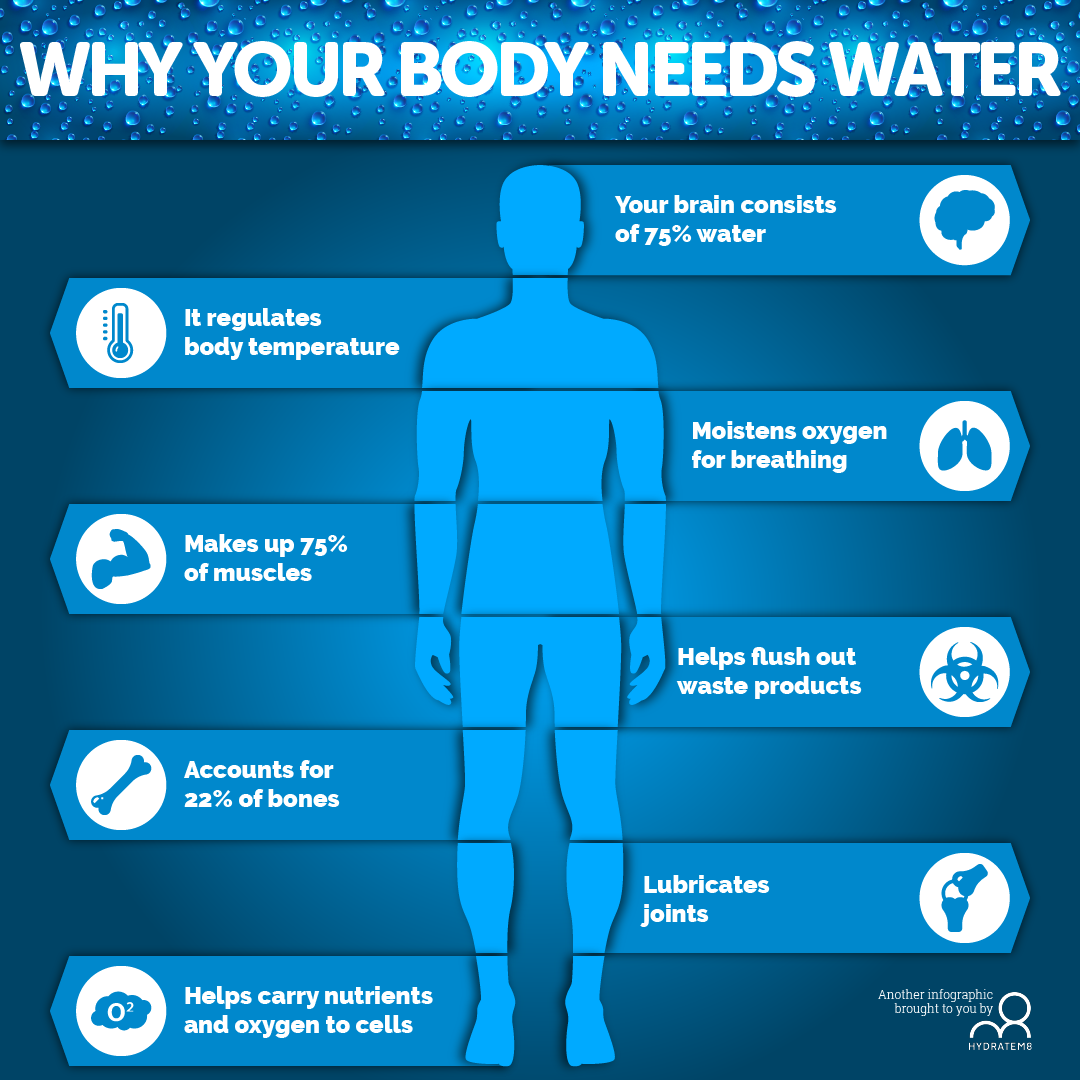 With the defeat of a significant amount of tissue, symptoms of intoxication appear: weakness, headaches, fever. The intensity of pain depends on the location of the formation. In the face area (lips, forehead), as well as on the scrotum, the formation of a boil is accompanied by swelling of the surrounding tissues, which is explained by the looseness of the subcutaneous tissue.
With the defeat of a significant amount of tissue, symptoms of intoxication appear: weakness, headaches, fever. The intensity of pain depends on the location of the formation. In the face area (lips, forehead), as well as on the scrotum, the formation of a boil is accompanied by swelling of the surrounding tissues, which is explained by the looseness of the subcutaneous tissue.
Causes of the development of a boil
The main cause of the development of a furuncle is the defeat of the hair follicle or its surrounding tissues by Staphylococcus aureus, rarely white. An important factor is also a decrease in general or local immunity against the background of chronic diseases, metabolic disorders, and infections. Pathology occurs especially often in patients with diabetes mellitus, obesity, chronic liver and kidney damage, oncological diseases, etc. Infection of tissues often occurs against the background of skin damage: scratches, cuts, abrasions, constant exposure to sweat or purulent discharge (from the nose, ears).
The causes of localized furunculosis are most often incorrect methods of therapy and ignoring the doctor’s recommendations (use of compresses, undertreatment of residual compaction, washing the place where the elements appear).
Get advice
If you experience these symptoms, we recommend that you make an appointment with your doctor. Timely consultation will prevent negative consequences for your health.
You can find out more about the disease, prices for treatment and sign up for a consultation with a specialist by phone:
+7 (495) 292-39-72
Request a call back
Book online
Why SM-Clinic?
1
Treatment is carried out in accordance with clinical guidelines
2
Comprehensive assessment of the nature of the disease and treatment prognosis
3
Modern diagnostic equipment and own laboratory
9000 2 4
High level of service and balanced pricing policy
Diagnosis
Diagnosis of boils is not difficult. During a visual examination of the patient, a dermatologist discovers a characteristic formation. Its appearance allows you to assess the stage of development of the disease. During the conversation, the doctor determines the possible cause of the development of boils, identifies risk factors. For an accurate diagnosis and determination of the pathogen, bakposev of the discharge is prescribed. In case of multiple lesions, additional diagnostics is carried out:
During a visual examination of the patient, a dermatologist discovers a characteristic formation. Its appearance allows you to assess the stage of development of the disease. During the conversation, the doctor determines the possible cause of the development of boils, identifies risk factors. For an accurate diagnosis and determination of the pathogen, bakposev of the discharge is prescribed. In case of multiple lesions, additional diagnostics is carried out:
- general and biochemical blood test;
- immunogram;
- assessment of hormone levels;
- examination by ENT, endocrinologist and other specialists;
- examination of internal organs, paranasal sinuses, lungs, etc. depending on the specific clinical situation.
Expert opinion
Furuncle is a rather serious disease, which should be treated with great care. In no case should you self-medicate: you should not make compresses, use various ointments – in most cases this leads to the spread of the inflammatory process.
A complication of a boil can be lymphadenitis and lymphangitis (damage to the lymphatic vessels and nodes). Of particular danger are rapidly progressing acute thrombophlebitis and sepsis.
Acute thrombophlebitis usually develops with boils located near the large saphenous veins, and sepsis – with boils of the face. They are often the result of attempts to squeeze out the contents of the boil, cutting it off during shaving, trauma during massage. The prognosis for these complications is very serious.
Omarova Andzhelika Mutaevna
Coloproctologist, surgeon, Ph.D.
Treatment of furunculosis
Treatment of furuncle is only surgical, because no other therapy will be successful if the focus of purulent inflammation is not removed or opened and drained in a timely manner.
The opening of the boil is usually performed under local anesthesia and is painless for the patient. At the same time, antibiotic therapy, means for correcting immunity and eliminating background pathologies, if any, are prescribed.
Simple (uncomplicated) lesions can be treated on an outpatient basis and do not require hospitalization. But in case of a severe course, if the patient develops swelling of the soft tissues of the cheek, lip or eye, urgent hospitalization is necessary in the surgical department to constantly monitor the development of the process and prevent complications.
Strict bed rest and appropriate therapy are prescribed for high fever.
Prevention
To minimize the risk of developing boils, it is necessary to regularly cleanse the skin of impurities and fully treat any tissue damage. People with hyperhidrosis and/or excess sebum need to pay special attention to hygiene. General measures are also important: proper nutrition, a healthy lifestyle, timely treatment of acute and chronic diseases.
Rehabilitation
After opening an uncomplicated boil, the patient goes home after 1-2. In the next 2 weeks, he needs to regularly visit a doctor for dressings, take prescribed medications. It is strictly forbidden to play sports, swim in open water or pools, overheat.
It is strictly forbidden to play sports, swim in open water or pools, overheat.
Questions and Answers
No. Self-medication and the use of folk remedies can cause complications.
Yes, when a purulent focus is located on the face, the infection can go to the meninges.
Gostishchev Victor Kuzmich. Clinical operative purulent surgery. Guide for doctors. GEOTAR-Media, 2016
Rodionov Anatoly Nikolaevich, Sydikov Akmal Abdikaharovich, Zaslavsky Denis Vladimirovich. Clinical dermatology. Illustrated guide for doctors. GEOTAR-Media, 2022
Nikolsky V. Yu., Imbryakov K. V. Furuncles and carbuncles of the face // Russian Dental Journal. 2013. No. 5.
Okulich V.K., Fedyanin S.D. RATIONAL USE OF ANTIBACTERIAL DRUGS IN PATIENTS WITH PURULENT WOUNDS, FURUNCULOSIS, FURUNCULES AND CARBUNCULES // Bulletin of the Voronezh State Medical University. 2003. No. 4.
>
Diseases referred by the Surgeon
Soft tissue abscess
liver abscess
Appendicitis
Ascites
Atheroma
femoral hernia
Crohn’s disease
Gangrene
soft tissue hematoma
Giant cell tumor of bone
Hygroma
festering wounds
Hernia
Hernia of the white line of the abdomen
hiatal hernia
Diastasis rectus abdominis
Intestinal diverticulosis
Cholelithiasis
Keratoma
liver cyst
pancreatic cyst
salivary gland cyst
Neck cyst
stab wound
stab wound
Lipoma
Mechanical jaundice
Bowel obstruction
burns
Oleogranuloma
kidney tumor
Acute pancreatitis
Felon
Pancreatic necrosis
Inguinal hernia
Peritonitis
Barrett’s esophagus
Postoperative hernia
Umbilical hernia
Cancer of the extrahepatic bile ducts
Stomach cancer
gallbladder cancer
bowel cancer
adrenal cancer
Parathyroid Cancer
Liver cancer
Esophageal carcinoma
colon cancer
thyroid cancer
Fistula of the gallbladder
Seroma
Thyroiditis
Intestinal injury
vein thrombosis
Thrombophlebitis
Furunculosis
cholestasis
Cholecystitis
Chronic cholecystitis
Esophageal ulcer
Peptic ulcer of the stomach and duodenum
Diseases referred to Dermatologist
Acne (pimples)
Allergic dermatitis
Atopic dermatitis
warts
Human papillomavirus (HPV)
Ingrown toenail (onychocryptosis)
Herpes (herpes virus 1, 2 types)
Hyperhidrosis (sweating)
Foot hyperhidrosis (excessive sweating)
Hyperkeratosis
Hyperkeratosis of the nails
Nail fungus (onychomycosis)
foot fungus
demodicosis
Dermatitis
Nail deformation
diabetic foot
Ichthyosis
Keratoma
warts
molluscum contagiosum
contact dermatitis
Hives
Couperose
Lichen
calluses
corns
Nevuses (moles)
Neurodermatitis
Onychodystrophy
Onycholysis
Rash under the breast
Pityriasis versicolor
Papillomas
Inguinal epidermophytosis
Pediculosis
Skin pigmentation
plantar warts
Loss of skin tone and elasticity
Prickly heat
Psoriasis
Pemphigus
Rosacea
Seborrheic dermatitis
seborrhea
Cracked feet
Acne
Folliculitis
Furunculosis
Scabies
Eczema
All doctors
VDNH metro station
Belorusskaya metro station
Molodyozhnaya metro station
Voikovskaya metro station
st. Kosmonavta Volkova, 9/2
Kosmonavta Volkova, 9/2
Staropetrovsky proezd, 7A, building 22
st. Clara Zetkin, 33 bldg. 28
Tekstilshchiki metro station
Kurskaya metro station
Sevastopolskaya metro station
Chertanovskaya metro station
Krylatskoe metro station
Baltiyskaya metro station
9 0002 Staropetrovsky proezd, 7A, building 22
st. Clara Zetkin, 33 bldg. 28
Maryina Roshcha metro station
Novye Cheryomushki metro station
Vodny stadium metro station
Street 1905 metro station
Yugo-Zapadnaya metro station
Sukharevskaya 9 metro station 0003
All doctors
Loading
Licenses
Go to section of licenses Go to section of legal information
treatment, opening, removal, treatment and ointments
- 0006
What is a boil?
Furuncle is an infection of the hair follicle leading to the formation of a cavity with accumulation of pus and dead tissue 1. 8 .
8 .
Both a single furuncle and furunculosis may appear – many boils at different stages of development.
According to the international classification of diseases (ICD-10) , diseases accompanied by the appearance of a boil are indicated by the name “Skin abscess, furuncle and carbuncle” and have the code L02 .
Formation of a boil
What symptoms may accompany the appearance of a boil?
- The appearance of nodules (papules) of various sizes, sometimes with an abscess
- Localization of lesions in the face, neck, thighs, buttocks
- Infection of neighboring follicles and the formation of a larger abscess, known as a carbuncle
- Scar formation after healing of lesions defeat
Causes of a boil
- Staphylococcus aureus (S. aureus) is the most common causative agent, but other bacteria can also cause infections.
- For example, with boils in the genital area, as well as the buttocks, intestinal bacteria such as enterobacteria (Enterobacteriaceae) and enterococci (Enterococci) become frequent pathogens 1.
 7 .
7 . - In addition, corynebacteria (Corynebacterium), epidermal staphylococcus (S. epidermidis) and beta-hemolytic streptococcus group A (S. pyogenes) can be the causative agents of infection in a boil.
- Recurrent boils are most often caused by methicillin-resistant Staphylococcus aureus (S. Aureus) 1 .
Factors provoking the appearance of a boil
In addition to the direct effect of the pathogen, various provoking factors can contribute to the onset of the disease:
- Physical contact with infected people
- Anemia
- Diabetes mellitus
- Poor personal hygiene
- Decreased immunity
- Skin diseases (atopic dermatitis, chronic wounds or ulcers on the legs)
- Obesity and hematological disorders
9000 5 Prior antibiotic therapy
How does a boil occur?
Maturation stage:
- Formation of edematous and painful thickening (infiltrate) of bright red color.

- Accumulation of fluid in a closed cavity, as indicated by the appearance of a symptom of fluctuation (fluctuation) in the central part of the seal.
- Formation of a purulent-necrotic shaft (hair base surrounded by pus and dead tissue).
- Opening of a boil with separation of purulent-necrotic masses.
Healing stage:
- Filling the formed “capacity” with young connective tissue (granulation).
- Scar formation (scar, rough connective tissue) 8 .
Diagnosis
The diagnosis is made on the basis of a visual examination and data from various research methods that a doctor can choose:
During visual inspection of , attention should be paid to the presence of a seal (infiltrate), in which 1 purulent core is located.
Culture of swabs from lesions is performed to identify the pathogen and determine its sensitivity to antibiotics.
Blood chemistry – to detect diabetes (glucose or glycated hemoglobin (HbA1c)).
Complete blood count – to exclude systemic infection and diseases of internal organs (an increased number of leukocytes, an increased erythrocyte sedimentation rate indicate severe inflammation).
Enzyme-linked immunosorbent assay (ELISA) – detection of HIV infection in relapses of the disease 1 .
How is a boil treated?
Several approaches are used in the treatment of a boil.
Surgical treatment
It is important to note that surgical treatment is carried out at the stage when a closed cavity filled with pus has formed in the boil.
- An abscess (accumulation of purulent contents) is opened.
- After an incision, cotton and gauze swabs may need to be inserted into the wound to remove liquid content (drainage).
Treatment directed at the pathogen (etiotropic treatment)
Etiotropic treatment consists in the appointment of systemic antimicrobial drugs that act on the pathogen. It is carried out in the presence of symptoms of acute inflammation: high body temperature, headache, general weakness, lethargy, as well as in the presence of a boil on the face and multiple boils – furunculosis 1.8 .
It is carried out in the presence of symptoms of acute inflammation: high body temperature, headache, general weakness, lethargy, as well as in the presence of a boil on the face and multiple boils – furunculosis 1.8 .
Please note that squeezing out the contents of the boil and doing massage near it is strictly prohibited!
Topical treatment of a boil depending on the stage of development
Stage of induration (infiltration) development
At the stage of formation of a painful edematous induration, the skin is treated with 70% alcohol or a solution based on povidone-iodine (Betadine ® ) . Antibiotics, electrophoresis with antiseptics can also be used.
In order to accelerate the maturation of the boil, it is recommended to apply warm compresses with 20–30% ethyl alcohol or 5–10% aqueous solution of ichthyol for 1–3 days. It is also possible to use ointments containing the following medicines 10 :
- Povidone-iodine (Betadine ® ) has an antiseptic effect, thanks to the macrogol in its composition, it helps to “pull out” pus.
 Promotes the destruction of harmful microorganisms and reduces the inflammatory process.
Promotes the destruction of harmful microorganisms and reduces the inflammatory process. - Kalanchoe (phytopreparation) has an anti-inflammatory and regenerating effect.
- Dimethyl sulfoxide has anti-inflammatory, antiseptic and analgesic effects.
- Tar and xeroform have an antimicrobial and regenerating effect.
- Pine oleoresin , which has an antimicrobial and regenerating effect.
- Ichthyol has antimicrobial, anti-inflammatory, keratoplastic (accelerates the formation of the stratum corneum) and analgesic effect.
- Salicylic acid which softens the stratum corneum and has an antimicrobial effect.
After opening the boil, it is advisable to accelerate the separation of purulent-necrotic masses (purulent core). Therefore, therapeutic tactics include the removal of liquid contents (drainage), the application of dressings with hypertonic solution, as well as ointments with proteolytic enzymes (Clostridiopeptidase A + Chloramphenicol), which have antibacterial, wound cleansing and wound healing effects.
Healing stage
It is recommended to apply sterile gauze soaked in a disinfectant, such as povidone-iodine (Betadine 9) to the central part of the lesion.0235 ® ) and ichthyol along the edge. It is possible to carry out physiotherapeutic procedures, for example, surface UHF therapy, infrared radiation.
At any stage of development of a boil, antiseptic treatment is very important, which helps to avoid the spread of infection and destroy the infection in the boil.
Antiseptic treatment of boils with preparations based on povidone-iodine (Betadine®)
Iodophors have proven themselves as a local antiseptic. Iodophors consist of complexes of iodine molecules with a carrier. In aqueous solution, iodophors release iodine molecules. The best known iodophor is Betadine ® . This drug is an iodine complex with a water-soluble polymer – povidone 11 .
Preparations Betadine ® have antimicrobial activity, act against gram-positive, gram-negative bacteria. In addition, povidone-iodine is active against fungi, viruses, and protozoa. The drug has a high safety profile 13-15 .
In addition, povidone-iodine is active against fungi, viruses, and protozoa. The drug has a high safety profile 13-15 .
Instruction
Where can I buy Betadine® solution?
Buy
Buy
Buy
Or
Find your nearest pharmacy
Search
- The antimicrobial action of occurs after free iodine is separated from povidone. The release occurs gradually, so the antiseptic effect is prolonged. Free iodine quickly penetrates microbes, destroys their structures, causing the death of harmful microorganisms.
- The virucidal effect of is also achieved due to the destruction of the membranes and intracellular structures of viruses by the released iodine from the povidone-iodine complex 12 .
- In addition, povidone-iodine, which is part of Betadine ® , , has activity against biofilms of certain types of microbes and thereby accelerates the healing process.
 Biofilms are a multitude of microorganisms that stick together and prevent the healing of affected areas 15 .
Biofilms are a multitude of microorganisms that stick together and prevent the healing of affected areas 15 . - Studies show that povidone-iodine does not cause “addiction” in microbes (development of resistance to it) 16 .
Betadine ® is available in a variety of formulations for use as an antiseptic. For the treatment of a boil, it is used in the form of a solution and ointment.
- The undiluted solution is applied to the area of the boil 13 .
- Betadine ointment ® is applied in a thin layer 2-3 times a day, it can be applied under an occlusive (isolating from air and water) dressing 14 .
Prevention of the occurrence of boils
- Personal hygiene is necessary, especially after touching infected skin or objects that have been in direct contact with the boil.
- Reuse or sharing of personal items (disposable/electric shavers, epilators, bedding, towels that have been in contact with infected skin) should be avoided.

- Increased environmental hygiene measures should be directed to surfaces (i.e. counters, doorknobs, tubs and toilet seats) that may come into contact with bare skin – these should be treated with antiseptics 9 .
Frequently asked questions
Which diseases have similar symptoms?
Carbuncle, anthrax, tularemia, acne conglobate, purulent hydradenitis, reaction to a foreign body and other types of abscesses have similar symptoms 1.8 .
Can complications occur with furunculosis?
The most common complications of furunculosis are scarring and recurrence of the disease. There is also the possibility of developing endocarditis, pneumonia, myositis, osteomyelitis, septic arthritis, meningitis and brain abscess after infection with Staphylococcus aureus 1 .
Which doctor should I contact?
A dermatologist will make a correct diagnosis and prescribe an effective treatment. If surgery is necessary, the assistance of a surgeon will be required. In addition, in the presence of concomitant diseases, a consultation with a therapist, endocrinologist, immunologist is needed.
In addition, in the presence of concomitant diseases, a consultation with a therapist, endocrinologist, immunologist is needed.
Kraskovsky Fedor Yanovich
Surgeon.
Read on topic
Povidone iodine
Characteristics and properties of povidone-iodine. What is povidone-iodine used for? Instructions for use of the solution, ointment, suppositories Betadine ® with povidone-iodine.
More
Ointment based on iodine
Ointment based on iodine: mechanism of action, scope. Ointment Betadine® based on povidone-iodine for the treatment of various skin diseases.
Read more
Carbuncle: treatment, ointments, creams, remedies
Carbuncle: causes, symptoms, methods of treatment. Antiseptic drugs Betadine® for the treatment of carbuncle.
More
References
- Luelmo-Aguilar J, Santandreu MS. Folliculitis: recognition and management.
 Am J Clin Dermatol. 2004;5(5):301-310. doi:10.2165/00128071-200405050-00003.
Am J Clin Dermatol. 2004;5(5):301-310. doi:10.2165/00128071-200405050-00003. - Winters RD, Mitchell M. Folliculitis. In: StatPearls. Treasure Island (FL): StatPearls Publishing; May 1, 2022.
- Review. J Investig Dermatol Symp Proc. 2001 Dec;6(3):170.
- Chiller K, Selkin BA, Murakawa GJ. Skin microflora and bacterial infections of the skin. J Investig Dermatol Symp Proc. 2001;6(3):170-174. doi:10.1046/j.0022-202x.2001.00043.x.
- Neubert U, Jansen T, Plewig G. Bacteriologic and immunological aspects of gram-negative folliculitis: a study of 46 patients. Int J Dermatol. 1999;38(4):270-274. doi:10.1046/j.1365-4362.1999.00688.x.
- Suzuki C, Hase M, Shimoyama H, Sei Y. Treatment Outcomes for Malassezia Folliculitis in theDermatology Department of a University Hospital in Japan. Med Mycol J. 2016;57(3):E63-E66. doi:10.3314/mmj.16-00003.
- Jang KA, Kim SH, Choi JH, Sung KJ, Moon KC, Koh JK. Viral folliculitis on the face. Br J Dermatol.
 2000;142(3):555-559. doi:10.1046/j.1365-2133.2000.03378.x.
2000;142(3):555-559. doi:10.1046/j.1365-2133.2000.03378.x. - Rusiecka-Ziółkowska J, Nokiel M, Fleischer M. Demodex — an old pathogen or a new one?. Adv Clinic Exp Med. 2014;23(2):295-298. doi:10.17219/acem/37081.
- Basarab T, Russell Jones R. HIV-associated eosinophilic folliculitis: case report and review of the literature. Br J Dermatol. 1996;134(3):499-503.
- Laing ME, Laing TA, Mulligan NJ, Keane FM. Eosinophilic pustular folliculitis induced by chemotherapy. J Am Acad Dermatol. 2006;54(4):729-730. doi:10.1016/j.jaad.2005.10.048.
- Ellis E, Scheinfeld N. Eosinophilic pustular folliculitis: a comprehensive review of treatment options. Am J Clin Dermatol. 2004;5(3):189-197. doi:10.2165/00128071-200405030-00007.
- Wen SC, Lee LY, Daley AJ, Chow CW, Phillips R, Gwee A. Persistent Folliculitis in An Immunocompetent Child. J Pediatric Child Health. 2018;54(11):1281-1282. doi:10.1111/jpc.14200.
- Firsowicz M, Boyd M, Jacks SK. Follicular occlusion disorders in Down syndrome patients.
 Pediatric Dermatol. 2020;37(1):219-221. doi:10.1111/pde.14012.
Pediatric Dermatol. 2020;37(1):219-221. doi:10.1111/pde.14012. - Bury K, Leavy JE, O’Connor A, Jancey J. Prevalence, Prevention and Treatment of Saddle Sores among Female Competitive Cyclists: A Scoping Review Protocol. Methods Protocol. 2020;3(1):4. Published 2020 Jan 6. doi:10.3390/mps3010004.
- Haddad Junior V. Profile of skin diseases in a community of fishermen in the northern coast of the state of São Paulo: the expected and the unusual. An Bras Dermatol. 2019;94(1):24-28. doi:10.1590/abd1806-4841.20197174.
- Lopez FA, Lartchenko S. Skin and soft tissue infections. Infect Dis Clean North Am. 2006;20(4):759-vi. doi:10.1016/j.idc.2006.09.006.
- Olisova O. Yu. Skin and venereal diseases: a textbook. – M.: Practical medicine, 2017. – 288 p.
- Lopez FA, Lartchenko S. Skin and soft tissue infections. Infect Dis Clean North Am. 2006;20(4):759-vi. doi:10.1016/j.idc.2006.09.006.
- Laureano AC, Schwartz RA, Cohen PJ. Facial bacterial infections: folliculitis.
 Clinic Dermatol. 2014;32(6):711-714. doi:10.1016/j.clindermatol.2014.02.009.
Clinic Dermatol. 2014;32(6):711-714. doi:10.1016/j.clindermatol.2014.02.009. - Luelmo-Aguilar J, Santandreu MS. Folliculitis: recognition and management. Am J Clin Dermatol. 2004;5(5):301-310.
- Hald M, Arendrup MC, Svejgaard EL, et al. Evidence-based Danish guidelines for the treatment of Malassezia-related skin diseases. Acta Derm Venereol. 2015;95(1):12-19.
- In Dermatol. Sep Oct 2010;28(5):502 4.Demodex mites: facts and controversiesDirk M Elston PMID: 20797509 DOI: 10.1016/j.clindermatol.2010.03.006.
- Salem DA, El-Shazly A, et al. Evaluation of the efficacy of oral ivermectin in comparison with ivermectin-metronidazole combined therapy in the treatment of ocular and skin lesions of Demodex folliculorum. Int J Infect Dis. 2013;17(5):e343-e347.
- Rajendran PM, Dolev JC, Heaphy MR Jr, Maurer T. Eosinophilic folliculitis: before and after the introduction of antiretroviral therapy. Arch Dermatol. 2005;141(10):1227-1231.
- Dumville JC, McFarlane E, Edwards P, Lipp A, Holmes A, Liu Z.



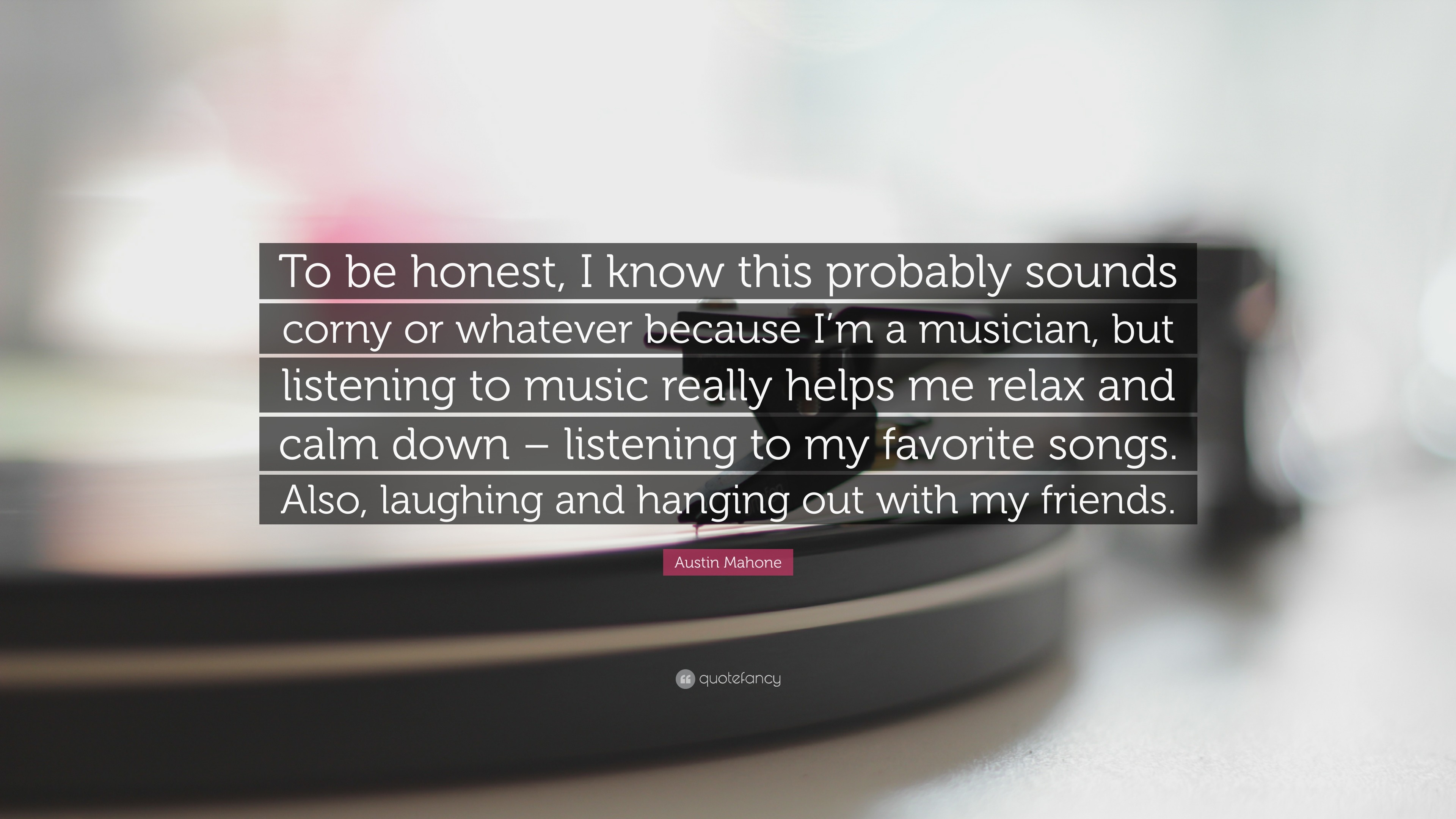

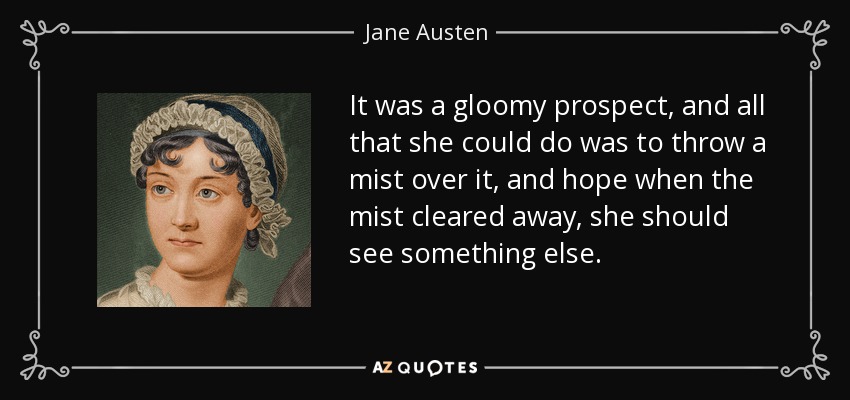

 7 .
7 .
 Promotes the destruction of harmful microorganisms and reduces the inflammatory process.
Promotes the destruction of harmful microorganisms and reduces the inflammatory process. Biofilms are a multitude of microorganisms that stick together and prevent the healing of affected areas 15 .
Biofilms are a multitude of microorganisms that stick together and prevent the healing of affected areas 15 .
 Am J Clin Dermatol. 2004;5(5):301-310. doi:10.2165/00128071-200405050-00003.
Am J Clin Dermatol. 2004;5(5):301-310. doi:10.2165/00128071-200405050-00003. 2000;142(3):555-559. doi:10.1046/j.1365-2133.2000.03378.x.
2000;142(3):555-559. doi:10.1046/j.1365-2133.2000.03378.x. Pediatric Dermatol. 2020;37(1):219-221. doi:10.1111/pde.14012.
Pediatric Dermatol. 2020;37(1):219-221. doi:10.1111/pde.14012. Clinic Dermatol. 2014;32(6):711-714. doi:10.1016/j.clindermatol.2014.02.009.
Clinic Dermatol. 2014;32(6):711-714. doi:10.1016/j.clindermatol.2014.02.009.